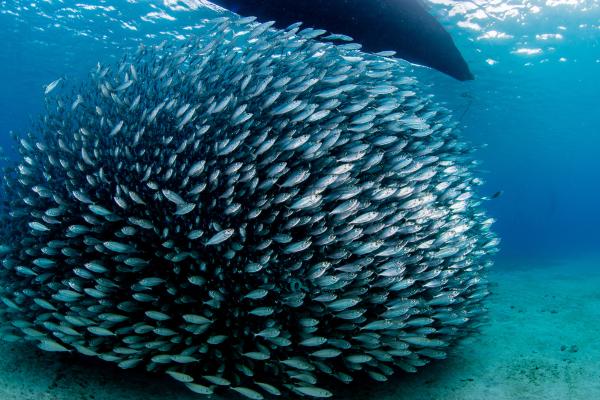You may have never seen a school of fish in person, but that doesn't take away from how amazing they look in photos, movies or videos. Understanding this ecological phenomenon, known as fish population dynamics, is undoubtedly an interesting research topic in the field of marine biology. First of all, we can say that a school of fish refers to a group or aggregation of fish that swim together. They are considered a common collective behavior of many fish species and are thought to have several functions, such as defense against predators, foraging, and reproduction.

What Are Fish Schools (Cardúmenes)?
Why Do Fish Form Schools? Key Benefits
Fish School vs. Shoal: Main Differences
A fish school, or "cardumen," refers to a group of fish that exhibit highly coordinated, synchronized swimming patterns. Individuals in a school are usually similar in size and age, which helps maintain the group’s unity and efficiency. This collective behavior is seen in many species such as sardines, anchovies, herrings, tunas, and some sharks (like hammerheads). Schooling is not only a spectacular sight but also a fascinating subject in marine biology.
Fish schools provide multiple advantages for their members, including:
Protection from Predators: Moving together in a dense, synchronized group confuses predators and makes it harder for them to single out one fish as prey.
Improved Foraging Efficiency: Schooling allows fish to use cues from others to find food sources more efficiently and to hunt collectively.
Reproductive Success: Being in large groups increases the chances of finding mates, promoting synchronized breeding and better survival of offspring.
Though often used interchangeably, these terms have distinct meanings in biology:
Fish School (Cardumen): A tightly coordinated group of fish moving and acting together in unison, often of the same or closely related species.
Fish Shoal (Banco de peces): Refers to a loose aggregation of fish in the same area, which may include different species and does not require coordinated movement. Shoaling usually happens due to resource abundance or favorable conditions.
Simply put, a school is a highly organized team, while a shoal is more like a crowd gathering in the same place.
The phenomenon of fish schooling offers valuable insights not only for marine biology but also for fields like robotics and artificial intelligence. Interested in more topics like "Necton" or animal gregariousness? Check out our other science articles!
animal tags: Fish School
We created this article in conjunction with AI technology, then made sure it was fact-checked and edited by a Animals Top editor.